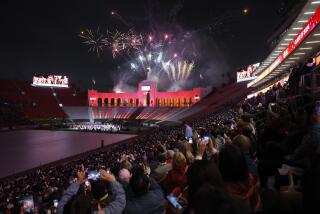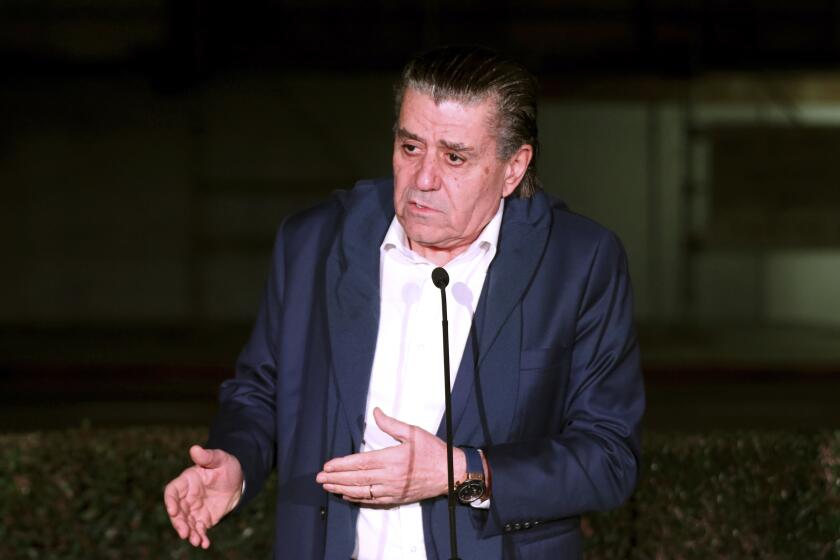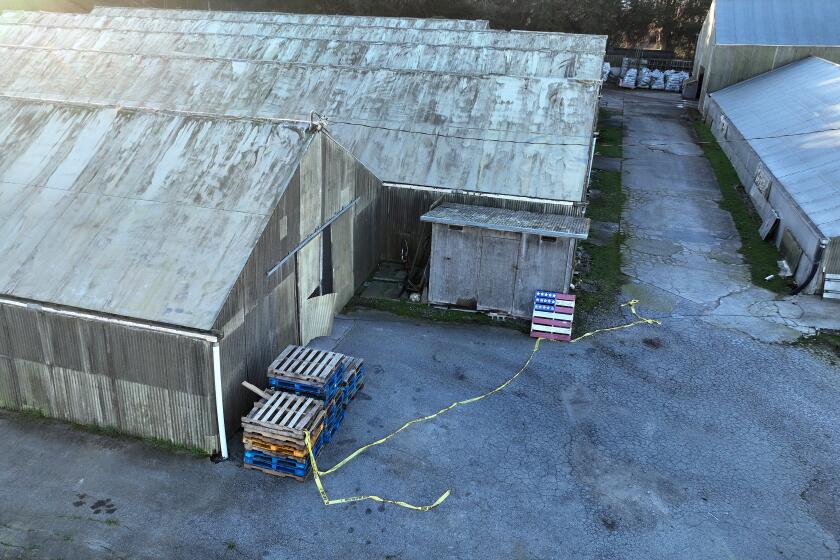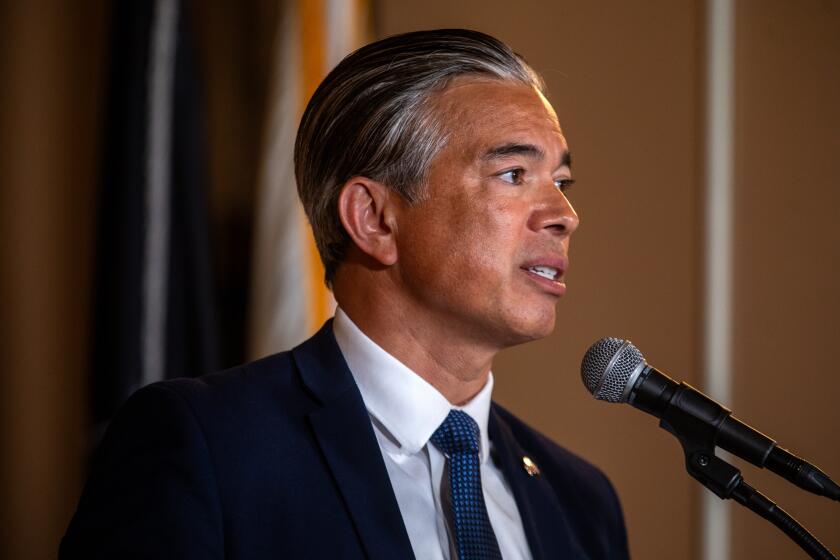Juvenile Hall Is Adding Wing for Violent Offenders
The San Fernando Valley Juvenile Hall will become the largest and most jail-like county youth facility in the nation when a high-security wing for violent teen-agers is completed two years from now.
Construction on the $16-million expansion of the Sylmar facility began last month. When completed in 1996, the wing will include two high-security buildings--containing 160 beds--equipped with a high-tech audio system for staff and visual monitors through which they can watch the youths’ movements.
Plans also call for an automatic gate and fence surrounding the facility and a more secure entryway for the hall, with a bulletproof room to protect staff from new inmates or visitors.
“We are meeting a need,” said Ed Anhalt, supervisor of the Juvenile Hall, which has 453 beds but in recent years has struggled to accommodate an average of 620 inmates at a time, about 50 of them considered violent.
“It is a statement on what is happening in the community: We have an increase in violent offenders,” Anhalt said.
The project also comes in the midst of a national debate over whether incarceration or prevention is the best way to combat the growing numbers of violent youths.
“There isn’t anything in this country that is going to come close to L.A. when this facility is built,” said Earl Dunlap, executive director of the National Juvenile Detention Assn., which oversees the more than 400 county youth detention facilities in the country. “But they can’t build their way out of the problem.”
No one disputes the stark facts: Violent crime among youths is on the rise nationwide, with the number of minors accused of murder, rape, aggravated assault and robbery growing 68% from 1988 to 1992, according to a recent study by the U.S. Justice Department. In Los Angeles County, there was a slight decline last year, but the numbers remain high: nearly 10,000 violent youths were arrested in 1993.
Like other county juvenile halls, the Sylmar facility is a holding place for youths awaiting a judge’s sentence, which for the most serious offenders could mean a transfer to the California Youth Authority--the state’s youth prison system.
But of the more than 26,000 young prisoners held at San Fernando Valley Juvenile Hall every year, officials said, only the hardest-core--those who have killed, raped, beaten or robbed, or are suicidal--will be placed in the high-security unit to prevent them from harming others or escaping.
During the past five years, Anhalt said, there have been two escapes from the facility. In both cases the escapees were recaptured after three days.
Making the hall more secure is reasonable, Dunlap said, but he added that county officials should strive to keep the environment less jail-like.
“That kind of massive security is fairly unusual,” he said. “They are just building a jail for kids. . . . Everybody says the problem in L.A. is different, but there are a lot of other jurisdictions in the country that are coming up with alternatives to lock-down.”
Taxpayers are paying the price for the hard-line approach to rising youth crime, Dunlap said. In Los Angeles, he estimated, it costs $45,000 to jail a juvenile for a year, compared to about $2,000 to put one youth through a year of intervention programs.
Rising youth crime figures nationwide have provided fuel for the fight to take a tougher stance, which may increase the stress on the juvenile justice system.
State legislators have pitched more than a dozen bills that increase penalties for youths, most of which are pending. Their suggestions range from establishing longer sentences for minors who commit violent crimes to trying youths as young as 14 as adults in murder cases.
Many youth experts insist that these get-tough efforts are not the best antidotes for a juvenile justice system already lagging in its response to the surge of violent offenders. They argue that the money would be better spent on rehabilitation and diversion programs that target at-risk youths.
“Locking up more people is not a solution to juvenile delinquency,” said John J. Wilson, acting administrator of the Office of Juvenile Justice and Delinquency Prevention, which coordinates federal efforts with state and local programs. “Yes, we have to protect the public, but we should be putting the money into the front end--through prevention programs.”
The proportion of youths incarcerated for violent crimes in California grew from 44% of juvenile inmates in 1987 to 61% in 1992, California Youth Authority data shows.
In the city of Los Angeles, there was a slight decrease in the number of violent youths apprehended last year: 9,970 youths were arrested for violent crimes in 1993, down about 5% from the 10,477 youths arrested in 1988.
Experts say the local decrease may be the result of preventive city ordinances--including curfews and laws making it illegal to sell knives, blades or other stabbing weapons to anyone younger than 18.
Nonetheless, local juvenile hall authorities say they remain in the midst of a serious housing crisis that needs to be addressed with beds, not words.
“We are severely limited in our space to accommodate them,” Anhalt said.
Juvenile Hall officials so wanted to build the high-security addition to the facility that they lobbied for two years to get financing, finally tapping into Proposition 86 funds, a $500-million state bond issue designated for construction of juvenile halls and jails. The county provided 25% of the project’s cost.
The two other juvenile halls that serve Los Angeles County--Los Padrinos in Downey and Central in Los Angeles--have what are considered high-security units. But, like other halls nationwide, their security measures are no match for what is planned at the Sylmar facility, officials said.
“We don’t have the luxury of gates and bulletproof windows around here,” said Michael Edwards, assistant superintendent of Central Juvenile Hall. “Right now, our staffs’ eyes and ears are our audio and visual equipment.”
Presently, Central is the largest juvenile detention facility in the country with 565 beds--although 111 cannot be used because they are in buildings destroyed by the January earthquake.
The Juvenile Temporary Detention Center in Chicago is now tied with the Sylmar facility as the second-largest juvenile center in the country, with about 450 beds. Los Padrinos has 431 beds.
More to Read
Start your day right
Sign up for Essential California for news, features and recommendations from the L.A. Times and beyond in your inbox six days a week.
You may occasionally receive promotional content from the Los Angeles Times.






